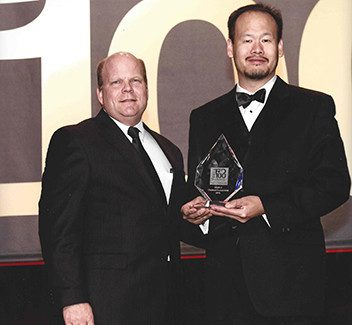BAAM Receives Award
The large-scale additive manufacturing system from CI and ORNL introduces significant new capabilities to the U.S. machine tool sector.
Posted: January 25, 2016
Cincinnati Incorporated (CI; Harrrison, OH) and Oak Ridge National Laboratory (ORNL; Oak Ridge, TN) earned top technology product of the year at the 2015 R&D 100 Awards and Technology Conference, in the process/prototyping category, for their innovative Big Area Additive Manufacturing system (BAAM). Carey Chen, the chief executive officer and president of CI, and Lonnie Love, a senior research scientist in the ORNL automation, robotics, and manufacturing group, were there to accept the award.
The team also earned the R&D Magazine 2015 Editor’s Choice Award. Widely recognized as the “Oscars of Invention,” the R&D 100 Awards have been identifying top technology products every year since 1963, and honoring their excellence and innovation.
CI and ORNL partnered in 2014 to develop the large-scale additive manufacturing system capable of printing polymer components up to ten times larger than currently producible, and at speeds 200 times to 500 times faster than existing additive machines. The agreement aims to introduce significant new capabilities to the U.S. machine tool sector, which supplies manufacturing technology to a wide range of industries including automotive, aerospace, appliance and robotics.
“BAAM will revolutionize the method and speed of prototyping, as well as the way tooling and production parts are made,” said Chen. “Aerospace and automotive markets have already been infused with additive’s technology, and the marine market is another prime candidate to benefit from its streamlining effects. Each new market is a catalyst for the usage of new and different materials. We are leading the way in the large scale and high speed additive manufacturing arena.”
BAAM is an industrial-sized additive machine with a proven design and technology from CI’s laser platform. BAAM was designed to allow 3D printing to be used for the production of large parts, quickly. Its ability to use commodity thermoplastic materials means that the cost per part will be reasonable, and by designing a system with an open architecture for material vendors, material costs can be kept lower and allow for more options.















